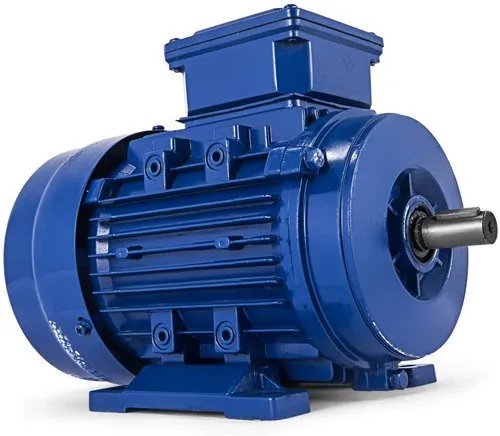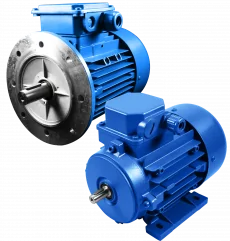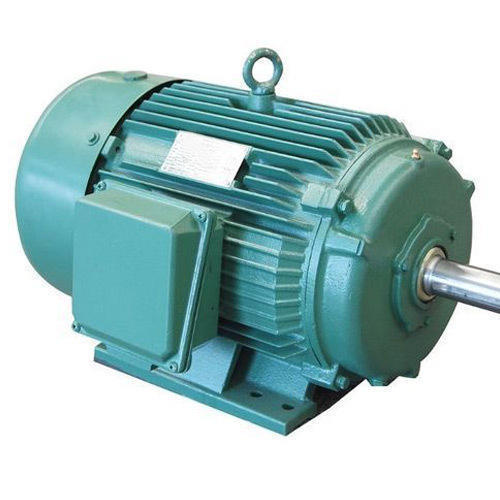Product Description
Product Description:
Y2,MS series three-phase asynchronous induction motor is a kind ofTEFC squirrel cage motor with the national unified design, it has the characteristics of high efficiency energysaving, high starting torque, low noise, low vibration and easy maintenance, the geade of power and the mounting mesasurement are subiect to the IEC standard, This series motor is commonly used in the machinery without special req-uirement specially for reducer,air compressor, water pump. oil pump, packaging and food machinery and so on.
Ambient temperature:-15ºC≤ 0≤ 40º
CAltitude: not exceeding 1000m
Rated voltage:380V
Rated frequency:50Hz,60Hz
Protection class:IP54,IP55
Insulation class:Class B/F
Cooling method:ICO141
Duty:S1(continuous)
company introduction
HangZhou UP CHINAMFG MACHINERY CO.,LTD. is a research and development,manufacturing, sales as 1 of the enterprises. The company’s main business is small and medium-sized asynchronous AC motor, Our main products include YC/YCL series single-phase capacitor starting asynchronous motors, YL series single-phase double–value capacitor asynchronous motors, MS series high-efficiency three-phase asynchronous motors with aluminum shell,YS Series three-phase asynchronous motor, YE3/YE4 series square type aluminum shell motor (71-160 frame),YD series variable pole multi-speed three-phase asynchronous motor, YE3 series high efficiency three-phase asynchronous motor YE4 series ultra-high efficiency three–phase asynchronous motor, YE5 series ultra-high efficiency three-phase asynchronous motor, etc.
The company in line with the “superior quality, first-class service” for the purpose, hot pillow look CHINAMFG to cooperating with customers from all over the world to create brilliant!
Factory Advantages:
| 1.Professional workman inspecting spare parts every processing. |
| 2.Guaranteed Quality We have best quality materials to make our electric motors best performance.Our products are 100% brand new , 100% cooper wire. It is newly designed in conformity with the relevant rules of IEC standards, Strictly and Perfect Management is guaranteed for Production |
| 3.Professional Service We valuing every customer. We’d like to assist you arranging delivery things, test things or others on your request. |
| 4. Fast delivery time, Normal models about 15-20days , another not normal models need about 30days |
| 5.We have advanced winding , painting, assembly and packing etc. production line which make our products nice appearance, good performance and well packaged. |
| 6. Electric motor will 100% check again before packing. An electric motor from material to finish motor, must pass 15 time check, and 100% testing, output power, voltage, electric current, non-load, 50% load, 75% load, 100% load and check the nameplate, packing. Finally shipping to our customer. |
| 7.We have professional financial department who are good at calculating and controlling the cost and capital operationwhich could make most favorable prices for our customers. |
Certification:
Our Service:
1. We valuing every customer.
2. We cooperate with customer to design and develop new product. Provide OEM.
3. 25-30 days leading time.
4. We’d like to assist you arranging delivery things, test things or others on your request.
Why us?
1. Our Manufacturer is a professional factory for Electric Motor in China
2. Have good price in China
3. Full of export experiences.
4. 100% tested for the quality prior to shipment
5. Special motors can be designed according to customers’ requirements
6. Perfect performance, low noise, slight vibration, reliable running, good appearance, small volume, light weight and easy maintenance.
7. Reliable in country, city or factory environments
10. Sincere and Professional Service
FAQ:
Q: What is your delivery time?
| A: Within 20~25 days after receiving deposit. |
Q: What is your MOQ of this item ?
| A: 10 PCS per item. |
Q: Can we type our brand on it?
| A: Yes of course. |
Q: Where is your loading port ?
| A: HangZhou Port, ZheJiang Port, China. |
Q: What is your production capacity?
| A: About 1000 PCS per day. |
Ordering instructions:
1.Please indicate the motor type,rated output,rated voltage,rated frequency,synchronous speed,Explosion proof Mark,mounting type,
2.If have special request,For example: the voltage, frequency,protection class,duplex shaft,direction of rotation.temperature monitoring device,please indicate in details in the ordering contract and CHINAMFG technical agreement if necessary
If you are looking for new better supplier or purchase electric motors, please feel free contact us now.You will get all what you want.
/* January 22, 2571 19:08:37 */!function(){function s(e,r){var a,o={};try{e&&e.split(“,”).forEach(function(e,t){e&&(a=e.match(/(.*?):(.*)$/))&&1
| After-sales Service: | Exchange Goods&Return of Goods |
|---|---|
| Warranty: | One Year Warranty |
| Function: | Driving |
| Protection Type: | Casing Protection |
| Number of Poles: | 2/4/6/8 |
| Transport Package: | Wooden Cases |
| Samples: |
US$ 85/Piece
1 Piece(Min.Order) | |
|---|
| Customization: |
Available
|
|
|---|

What are the key components of a typical 3-phase motor?
A typical 3-phase motor consists of several key components that work together to convert electrical energy into mechanical energy. Here’s a detailed explanation of the key components of a typical 3-phase motor:
- Stator: The stator is the stationary part of the motor and contains the core, windings, and other structural components. It consists of a laminated iron core with slots where the motor windings are placed. The stator windings are connected to the power supply and create a rotating magnetic field when energized.
- Rotor: The rotor is the rotating part of the motor and is located inside the stator. It consists of a laminated iron core with conductive bars or coils embedded in it. The rotor is designed to rotate within the magnetic field generated by the stator windings. The interaction between the stator’s rotating magnetic field and the rotor’s conductive elements induces currents in the rotor, creating a torque that drives the rotation of the motor.
- Windings: The windings are conductive coils of wire that are wound around the stator slots. In a 3-phase motor, there are typically three sets of windings, each spaced 120 degrees apart. These windings are designed to carry the three-phase alternating current (AC) from the power supply. The arrangement and connection of the windings create a rotating magnetic field in the motor, which interacts with the rotor to produce torque and rotation.
- Power Supply Connections: The motor has terminals or leads for connecting it to the three-phase power supply. The power supply connections are typically labeled as L1, L2, and L3, corresponding to the three phases of the power supply. These connections provide the alternating current required to energize the stator windings and create the rotating magnetic field.
- Bearings: Bearings are used to support the rotor and allow it to rotate smoothly within the stator. The motor typically has two bearings, one at each end of the rotor shaft. These bearings reduce friction and enable the efficient transfer of rotational motion from the rotor to the motor’s load.
- Shaft: The shaft is a cylindrical component that extends from the rotor and serves as the mechanical link between the motor and the load. The shaft transfers the rotational motion generated by the motor to the connected equipment or machinery.
- Housing or Frame: The motor is enclosed in a housing or frame that provides protection and support for the internal components. The housing is typically made of a durable material such as metal or plastic and is designed to withstand the operating conditions of the motor.
- Cooling System: Many 3-phase motors incorporate a cooling system to dissipate heat generated during operation. This may include cooling fins on the motor housing, fan blades attached to the rotor shaft, or a separate cooling fan. Efficient cooling is essential to maintain optimal motor performance and prevent overheating.
These are the key components of a typical 3-phase motor. Each component plays a crucial role in the motor’s operation, from generating the rotating magnetic field to transferring mechanical energy to the load. Understanding these components is essential for troubleshooting, maintenance, and proper operation of 3-phase motors.

What maintenance practices are essential for prolonging the lifespan of a 3-phase motor?
Proper maintenance is crucial for prolonging the lifespan and ensuring the reliable performance of a 3-phase motor. Here are some essential maintenance practices that should be followed:
- Regular Cleaning: Keep the motor and its surrounding area clean and free from dust, dirt, and debris. Regularly inspect and clean the motor’s exterior, ventilation openings, and cooling fins. This helps prevent the accumulation of contaminants that can interfere with the motor’s cooling and ventilation, leading to overheating and reduced efficiency.
- Lubrication: Follow the manufacturer’s recommendations for lubrication intervals and use the specified lubricants. Proper lubrication of bearings, gears, and other moving parts reduces friction, minimizes wear and tear, and ensures smooth operation. Inspect and replenish lubricants as needed, taking care not to over-lubricate, which can cause excessive heat buildup.
- Vibration Analysis: Monitor motor vibrations regularly using vibration analysis techniques. Excessive vibration can indicate misalignment, worn bearings, or other mechanical issues. By detecting and addressing vibration problems early on, potential failures can be prevented, and the motor’s lifespan can be prolonged.
- Electrical Inspections: Periodically inspect the motor’s electrical connections, terminals, and wiring for signs of wear, loose connections, or overheating. Tighten any loose connections and address any abnormalities promptly. Electrical inspections help prevent electrical failures and ensure safe and efficient motor operation.
- Temperature Monitoring: Monitor the motor’s operating temperature using temperature sensors or thermal imaging. Abnormally high temperatures can indicate issues such as overload, insufficient cooling, or bearing problems. Regular temperature monitoring allows for timely identification of potential problems and the implementation of corrective measures.
- Alignment and Balancing: Ensure the motor is properly aligned with the driven equipment, such as pumps or fans. Misalignment can cause excessive stress on the motor shaft and bearings, leading to premature failure. Additionally, balance any rotating components, such as fan blades or impellers, to reduce vibrations and strain on the motor.
- Inspect and Replace Worn Parts: Regularly inspect the motor’s components, such as belts, pulleys, brushes, and capacitors, for signs of wear, damage, or deterioration. Replace any worn or damaged parts promptly to prevent further damage to the motor and ensure optimal performance.
- Preventive Maintenance Schedule: Establish a preventive maintenance schedule based on the manufacturer’s recommendations and the motor’s operating conditions. This schedule should include routine inspections, lubrication, cleaning, and testing. Adhering to a regular maintenance routine helps identify potential issues early on and allows for timely repair or replacement, thus extending the motor’s lifespan.
- Training and Documentation: Ensure that maintenance personnel are properly trained in motor maintenance procedures and safety protocols. Maintain detailed documentation of maintenance activities, including dates, observations, and performed tasks. This documentation provides a historical record of maintenance activities and facilitates troubleshooting and future maintenance efforts.
- Environmental Considerations: Protect the motor from harsh environmental conditions, such as excessive heat, humidity, dust, or corrosive substances. If the motor is exposed to such conditions, consider implementing protective measures, such as enclosures, ventilation systems, or sealing, to safeguard the motor and prolong its lifespan.
By implementing these maintenance practices, motor owners can maximize the lifespan, reliability, and performance of their 3-phase motors. Regular inspections, cleaning, lubrication, and addressing any identified issues promptly are key to ensuring optimal motor operation and minimizing the risk of unexpected failures.

How does a 3-phase motor ensure consistent and reliable performance in machinery?
A 3-phase motor is designed to ensure consistent and reliable performance in machinery. Here’s a detailed explanation of how it achieves this:
- Rotating Magnetic Field:
- A 3-phase motor operates by creating a rotating magnetic field in its stator. This rotating magnetic field induces a current in the rotor, causing it to rotate.
- The design of the 3-phase motor, with three separate windings spaced 120 degrees apart, ensures a smooth and continuous rotation of the magnetic field. This results in a consistent and reliable rotation of the motor’s rotor.
- Power Distribution:
- 3-phase motors are typically connected to a 3-phase power supply. The three phases of the power supply provide a balanced and continuous flow of electrical power to the motor.
- This balanced distribution of power across the three phases helps maintain a consistent and steady supply of electrical energy to the motor. It ensures that the motor receives a continuous and reliable power source, minimizing fluctuations and interruptions in performance.
- Higher Efficiency:
- Compared to single-phase motors, 3-phase motors are known for their higher efficiency and smoother operation. The balanced three-phase power supply and the rotating magnetic field contribute to this superior performance.
- The balanced power distribution reduces power losses and minimizes voltage drops, resulting in improved energy efficiency. Additionally, the rotating magnetic field provides a more uniform torque output, reducing vibrations and ensuring smoother operation.
- Robust Construction:
- 3-phase motors are constructed to withstand the demanding conditions often encountered in industrial machinery.
- Their robust design, including sturdy frames, high-quality materials, and effective cooling mechanisms, enhances their durability and reliability. This allows 3-phase motors to consistently deliver reliable performance, even in challenging environments.
- Motor Protection:
- To ensure reliable performance, 3-phase motors are equipped with various protective features.
- These may include thermal overload protection, which safeguards the motor against excessive heat by monitoring the motor’s temperature and tripping a protective device if it exceeds a safe threshold.
- Other protective features may include voltage and current monitoring, short circuit protection, and phase failure protection. These mechanisms help prevent damage to the motor and ensure its consistent and reliable operation.
Overall, a 3-phase motor ensures consistent and reliable performance in machinery through its design characteristics, balanced power distribution, higher efficiency, robust construction, and built-in protective features. These elements work together to deliver smooth operation, minimal interruptions, and long-term reliability, making 3-phase motors a preferred choice for a wide range of industrial applications.


editor by CX 2024-05-07
